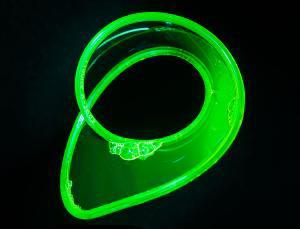The light was twisted into a Mobius strip
 Mobius strip is the simplest one-sided object. It is easy to make it out of a strip of paper if you connect the opposite ends by first turning over one of them. These mathematical structures are used in various fields of science and art: from Escher lithographs to the Mobius electric resistor , but they are almost never found in nature.
Mobius strip is the simplest one-sided object. It is easy to make it out of a strip of paper if you connect the opposite ends by first turning over one of them. These mathematical structures are used in various fields of science and art: from Escher lithographs to the Mobius electric resistor , but they are almost never found in nature. Scientists from the Institute of Light Physics of the Max Planck Society (Erlangen, Germany) for the first time in the world managed to turn a ray of light into a Mobius strip .
The work of Peter Banzer with colleagues proves the assumption made by Israeli physicist Isaac Freund in 2005. He predicted that one could manipulate the polarization of light and fold it into different geometric shapes.: cones, spirals, Mobius stripes, etc.
In 2010, Freund proposed a way to test his theory: to prepare two beams with different polarizations so that pre-calculated interference arises. This interference leads to a change in polarization.
Peter Bantser and colleagues achieved the desired interference of two polarized green lasers using a gold nanoparticle smaller than the wavelength of a green laser. The result is a polarization structure such as a Mobius strip with three or five twists.
This is the first experimental evidence in history that Mobius stripes really exist. The proof of the phenomenon opens the door to the practical use of polarized light in various applications: for example, you can design optical tweezers to manipulate tiny particles of matter.
